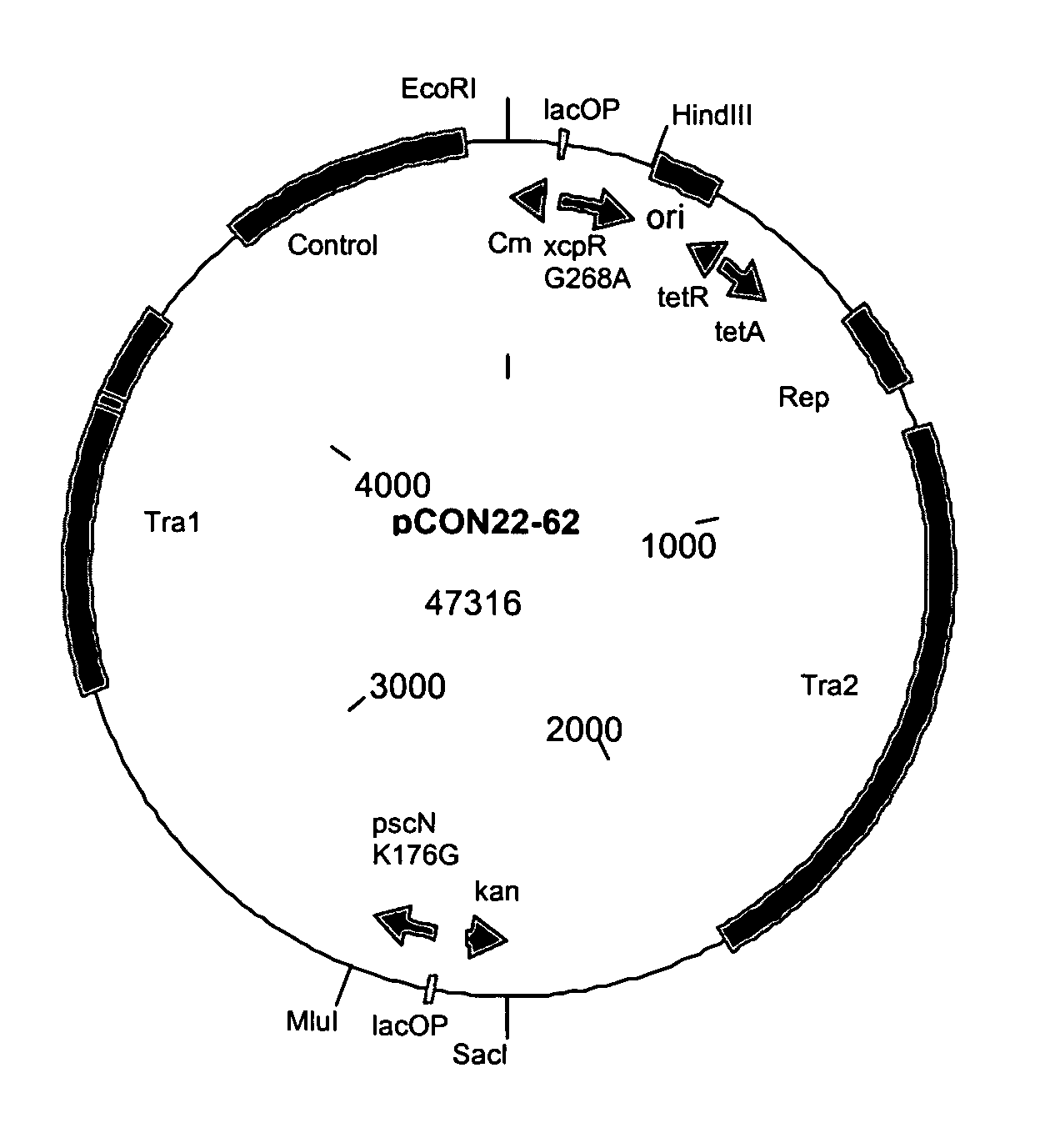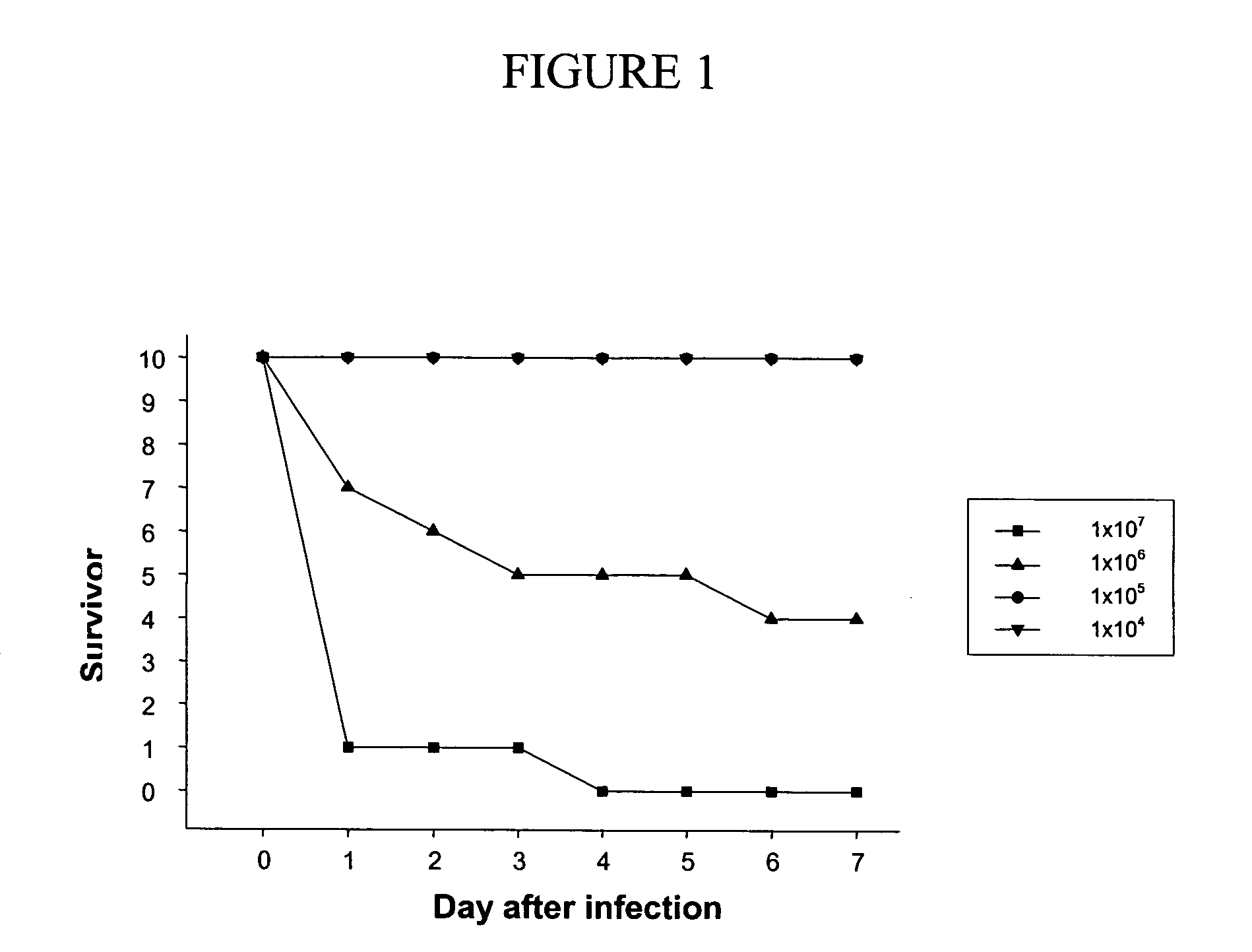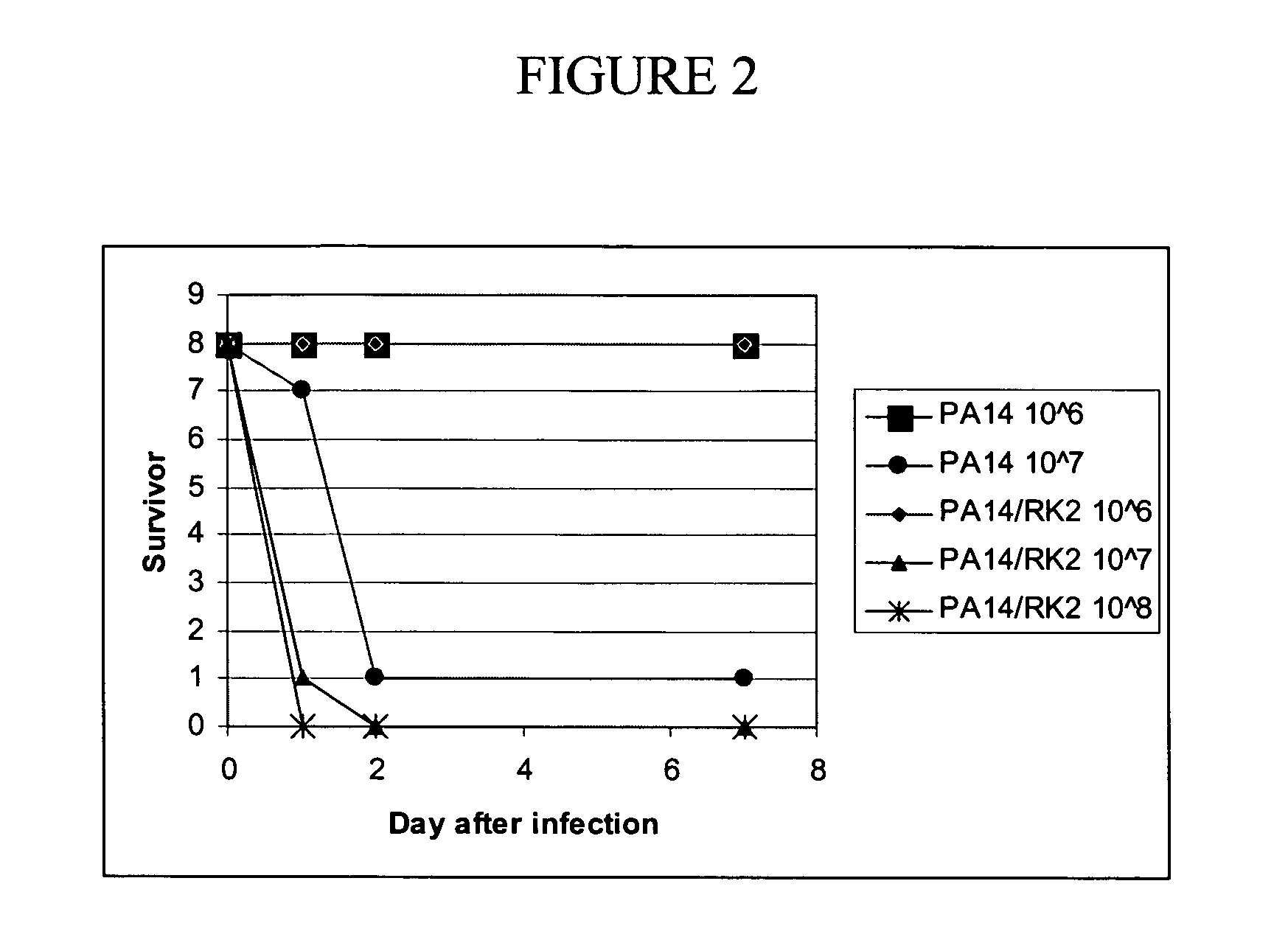Compositions and methods for altering cellular functions
a technology of cellular functions and compositions, applied in the field of bacteria, can solve the problems of inability to avoid the selection of antibiotic resistant bacterial mutants, the current arsenal of antimicrobial agents is not strong enough, and the use of bacteriophages as antimicrobial agents has certain limitations
- Summary
- Abstract
- Description
- Claims
- Application Information
AI Technical Summary
Benefits of technology
Problems solved by technology
Method used
Image
Examples
example 1
Materials and Methods
Bacterial Strains and Media
[0148] Vector construction utilized Escherichia coli strains JM109 (C. -Yanisch-Perron, J. Vieira, J. Messing, Gene 33, 103-19 (1985)) and TOP10 (Invitrogen). For testing of DN alleles in the murine pneumonia model, Pseudomonas aeruginosa PA14 was used as a pathogen, and the host strain for the constructed plasmids (L. G. Rahme et al., Science 268, 1899-902 (1995)). All cloning was performed using standard methods known in the art, and using Luria Bertani (LB) growth media supplemented with the appropriate drugs for selection of plasmids: carbenicillin, 100 μg / ml; kanamycin, 25 μg / ml; tetracycline, 15 μg / ml; chlormaphenicol, 20 μg / ml. For growth of P. aeruginosa, LB broth was supplemented with 50 μg / ml rifampicin and plasmids were selected by the addition of 50 μg / ml tetracycline.
Construction of Plasmids
[0149] Construction of pCON4-78, a self-transmissible cloning vector derived from RK2. RK2 is a self-transmissible conjugative p...
example 2
Monitoring Pathogen Virulence—Pseudmonas aeruginosa PA14
[0154]P. aeruginosa PA14 (L. G. Rahme et al., Science 268, 1899-902 (1995)) was chosen as a model target pathogen and used in a murine pneumonia model in order to test and demonstrate the utility of the invention. PA14 is virulent to number of organisms including plants, animals and worms. First, in order to demonstrate attenuation of virulence, normal levels of virulence for the pathogen in the murine pneumonia model were determined.
[0155] In this model, the death of an animal is an end point of the assay. Different amounts of the pathogen were nasally instilled into mice lungs, and the condition and health status of individual mice monitored for up to 7 days. It was expected that the LD50 would fall somewhere around 3 days after administration of the pathogenic agent. Due to relatively large variations between experiments, it was difficult to obtain an exact LD50. However, the experiment did identify a dose, one not so larg...
example 3
Effect of Plasmid Vector on Virulence
[0158] The RK2 system was used to deliver mutant genes among a population of P. aeruginosa. Thus, it is important to demonstrate that the plasmid itself does not have an effect on the virulence of the PA14 pathogen. In this experiment, the virulence of P. aeruginosa carrying and not carrying the RK2 plasmid was analyzed. Based on previous experiments (see, e.g., Example 2), doses of the pathogen starting at 1×106 cfu per animal were chosen. The experimental methods were the same as those previously described (see, e.g., Example 2). For selection of RK2, the growth medium was supplemented with 50 μg / ml tetracycline.
[0159] The following doses and conditions were used:
Number of micebreedpathogendose / cfu8Swiss WebsterPA14 / RK21068Swiss WebsterPA14 / RK21078Swiss WebsterPA14 / RK21088Swiss WebsterPA141068Swiss WebsterPA14107
[0160] The results are shown in FIG. 2. As observed in Example 2, a dose of 107 cfu of PA14 was lethal within two days. There was ...
PUM
| Property | Measurement | Unit |
|---|---|---|
| Pharmaceutically acceptable | aaaaa | aaaaa |
Abstract
Description
Claims
Application Information
 Login to View More
Login to View More - R&D
- Intellectual Property
- Life Sciences
- Materials
- Tech Scout
- Unparalleled Data Quality
- Higher Quality Content
- 60% Fewer Hallucinations
Browse by: Latest US Patents, China's latest patents, Technical Efficacy Thesaurus, Application Domain, Technology Topic, Popular Technical Reports.
© 2025 PatSnap. All rights reserved.Legal|Privacy policy|Modern Slavery Act Transparency Statement|Sitemap|About US| Contact US: help@patsnap.com



